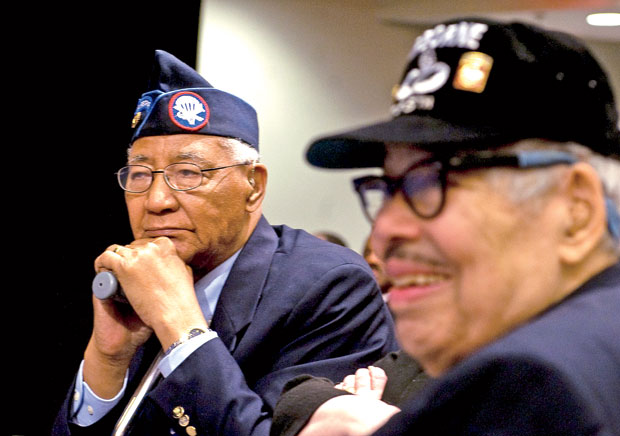Walter Morris joined the paratroopers in 1940, when segregation of blacks and whites was still very much alive in America. In terms of the Second World War, this meant that Morris didn’t have to fight due to racist concerns that he would be too inferior to fight well.
Black troops were not treated as inferior three years later, however, when Morris was given a new designation as the leader of a division that happened to be housed right next to the paratrooper training grounds. This recently trained division was to add a new advantage to the Allied side of the war, and Morris was able to watch their every move. Morris began to put his own troops through the same training regimen once the whites had vacated the grounds.
Brigadier General Ridgley Gaither caught Morris and his troops in the act one day and immediately questioned him on why the black troops were acting outside of their jurisdiction. Morris answered honestly: they wanted to serve in the war, and if they couldn’t do so then they could at least build some morale. The timing could not have been better. Gaither had actually received orders to start up a band of black paratroopers. Since Morris was able to copy the training regimen simply through observation, he seemed the most pragmatic choice to command the company, the Parade reports.
Morris became sergeant of the new black division, which comprised literally hundreds of paratroopers. Many of them came from the 92nd Infantry Division, but the ranks grew significantly by 1945. Even then, they had yet to be tested in battle. While Morris led a team of paratroopers who had been expertly trained to perform their duties, his commanding officers explained to him that integrating the black troops with the whites would injure camaraderie—a sentiment with which Morris was not necessarily inclined to agree, but was not necessarily inclined to argue, either.
To avoid integration, the paratroopers instead began Operation Firefly. Japanese soldiers had been transporting incendiary bombs over the Pacific Northwest. Morris and his squad were ordered to handle the threat. The black paratrooper division made over one thousand and two hundred jumps to extinguish the bombs’ resultant fires. Thanks to the training they had received, only one of them lost his life to the operation. Two years after the war, they were honored for their feats by becoming the first black division to finally see integration.
Major Michael Fowles, grandson of Walter Morris, became a black paratrooper himself in 2004, long after segregation ceased to be an issue. Having heard his grandfather’s story for the first time, he saw his position in a much different light. He had already understood that Morris was the first black paratrooper back in WWII, but only after hearing the full story did he understand the greater implications this had on integration in the military and the war as a whole.
//
